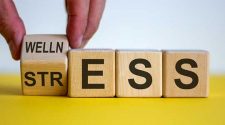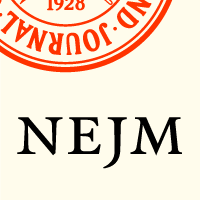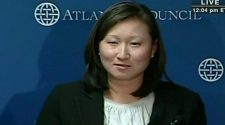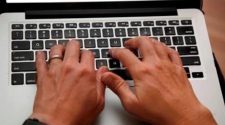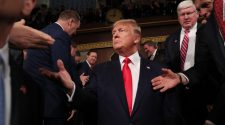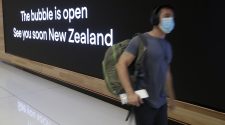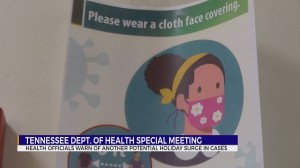Public health institutions have long walked the difficult line between respecting individual freedoms and protecting society from disease threats — which has sometimes involved restricting those freedoms. This balancing act has often been met with contentious public debate and legal challenges. In perhaps the most famous example, the state’s police power to protect public health was affirmed by the U.S. Supreme Court in its 1905 decision in Jacobson v. Massachusetts. The Court determined that a state may compel vaccination, as a result compromising people’s right to bodily autonomy, for the purpose of promoting public health — thereby upholding the community’s competing right to protect itself from deadly disease.
During the Covid-19 pandemic, negotiating such trade-offs became substantially more complex, given a rapidly changing environment and an evolving body of knowledge about SARS-CoV-2. Particularly early in the pandemic, decisions affecting personal freedoms had to be made quickly, with little opportunity for public deliberation. Public health authorities understandably made decisions by relying on prepandemic planning that was based on previous experience with respiratory viruses. As the pandemic dragged on, however, the continued absence of publicized debate about these trade-offs within public health institutions and among public health experts turned masking into a flash point for the clash between competing rights: the right to bodily autonomy (including the freedom to decide whether to mask) and the right to be protected from the threat of Covid-19. Far too often, discussions about the implications of various masking policies were drowned out by absolutist language on both sides of the debate, suggesting, on the one hand, that mask mandates were an unacceptable infringement on freedoms or, on the other, that choosing not to mask was tantamount to choosing to harm others.
The reality is far more complex, and the all-or-nothing disputes that have predominated during the past 2 years have obscured the difficult choices that public health authorities must make and the range of factors that should be weighed when considering mask mandates. Such factors include, but aren’t limited to, the evidence for the efficacy of masking in communities with a range of Covid-19 transmission rates, the potential downsides of wearing a mask in various social contexts, and which groups of people bear the highest risk of infection. Early in the pandemic, when Covid-19 vaccines weren’t available, when there was limited epidemiologic evidence to inform mitigation policy, and when the risk of infection was high, it was perhaps easier for authorities to reach decisions to implement mask mandates. Matters became more complicated, however, as the pandemic evolved. We believe the decisions that have been made during this later stage of the pandemic — after the introduction of highly effective vaccines, and when the trade-off between the efficacy and the perceived harms of masking in public spaces was more nuanced — warrant reexamination by public health institutions.
One example of public spaces affected by mask mandates are grocery stores. For the average, healthy customer, a mask mandate may serve little purpose if community levels of Covid-19 are low. But the risk calculation is different for cashiers and other essential workers in these spaces. These workers are more likely than members of the general working public to be Black or Latinx, to have incomes below 200% of the federal poverty level, or to live with someone who is 65 years of age or older.1 Such lower-income and marginalized racial and ethnic groups have had disproportionately poor outcomes during the pandemic, as have older adults. In these spaces, the benefits of mask mandates to essential workers may outweigh the inconvenience that masks pose to customers, even if community transmission levels are relatively low. At the same time, such benefits may not outweigh the costs associated with engaging in frequent confrontations with customers over masking. The ability to make these calculations, which are specific to local contexts, might obviate the need for a blanket masking policy; such nuances also suggest that the most useful role for public health institutions may be to provide data to support risk assessments and frameworks that could guide decision making by relevant local leaders.
Another example of public spaces affected by mask requirements and other Covid-related policies are local courthouses. The state has the power to compel people to be present in courthouses as defendants, lawyers, witnesses, and jury members. Given this power to compel, the state has a duty to protect people in these spaces. Criminal defendants are often residing in congregate-living settings (i.e., jails), where Covid-19 outbreaks have spread quickly and with deadly consequences, and many are poor and are members of marginalized racial groups. The state also has a responsibility to citizens who expect their health and safety to be protected while they serve as jurors for their peers.
To fulfill these responsibilities while carrying out essential functions of the legal system during Covid-19 surges in 2020 and 2021, many courts adopted risk-mitigation measures, including virtual court hearings, social distancing in courtrooms, lightened trial schedules and delayed trial dates, mask mandates, and jury-service exemptions for people at high risk for complications of Covid-19 (or people who were particularly fearful of Covid-19).2 But some of these measures may have compromised the rights of people interacting with the legal system. Lightened trial schedules hinder the constitutional right to a public trial without delay. Holding trials virtually or spreading jurors throughout the courtroom to facilitate social distancing may make it too easy for jurors to become distracted and may thus influence judgments.3 Masks may affect jurors’ perception of testimony, thereby potentially compromising the right to a fair trial.4 There is no simple way to balance the right to health and safety with the right to equal access to justice for people compelled to participate in the court system. The role of public health institutions is to advance recommendations based on science, but decisions must ultimately take into account a breadth of concerns, many of which may be beyond the remit of public health authorities. Public health entities shouldn’t make these judgment calls in isolation, particularly without including local stakeholders in the process.
Public health decision making related to Covid-19 has required complicated balancing; some decisions, such as whether to close schools, can have substantial consequences for an entire generation. A confluence of factors that coincided with the beginning of the Covid-19 pandemic — including an impending U.S. federal election and the ascendance of social media as a dominant platform for public conversation — limited the ability of public health practitioners to seriously discuss the trade-offs involved in Covid-related decisions.
As the pandemic evolves, we believe it’s time to shift away from this dynamic and to recognize that pandemic-era decision making requires the transparent balancing of multiple rights. Complex decisions should be widely and publicly debated by public health institutions. Similarly,






